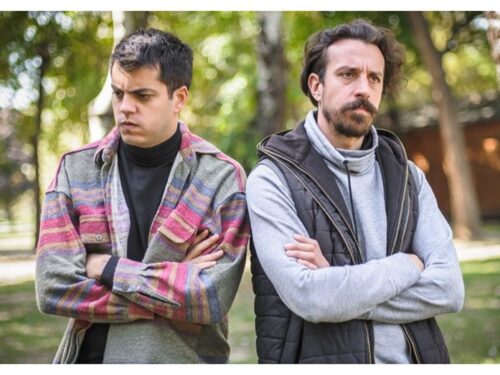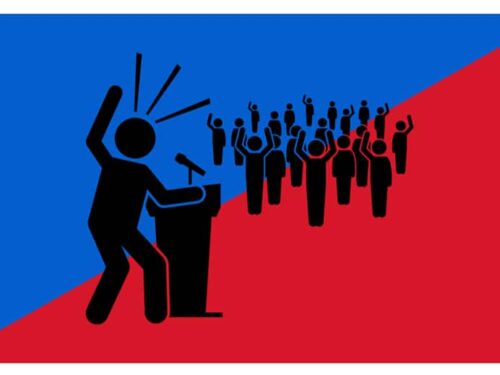
When I learned that the Texas school shooter was bullied in school, I couldn’t help but think back to my childhood.
I was bullied mercilessly in middle and junior high school. I was beaten up, my lips cut, my glasses broken, and my clothing torn on a regular basis. I was called “f*gg*t” repeatedly, not because I was gay, but because I sang in the choir, and acted in plays and musicals, and because I had lots of girl friends who were not romantic partners, just actual friends. I was, and still am, considered a “too sensitive” person, especially by men who see it as weakness or are frightened by it.
For this apparent affront to masculinity, I was often teased and humiliated in the boys’ locker room; repeatedly treated to violent “wedgies” by a group of guys bigger than me because I wasn’t a “jock.” And, other than the f-word (which I absolutely abhor and never use), my bullies’ and their friends’ most common nickname for me was “Weirdo Ward.”
Did I have violent revenge fantasies? You bet. But I never once thought about using a gun. In my mind, my preferred revenge weapon was an ax or sword. I can still remember fantasizing about stabbing or chopping off the head of one of my main tormentors, a big, tall football player who seemed to enjoy throwing me to ground and up against the lockers in the hallways, just because he knew I wouldn’t fight back and that no one would dare try to stop him. No one ever did.
So, when I hear that the mass shooter in Texas was bullied in school (like many other shooters, according to recent studies), there’s a small, angry, humiliated, and mean little part of me that understands; not condones, but understands at a very primitive, gut level the need to lash out and destroy.
But I was lucky. I had parents who supported me, a big brother who came to my rescue when he could, sympathetic teachers I could talk to, and a very progressive church school where we discussed treating everyone – no matter who they were – with respect, decency, and civility. I was also lucky because I was very good with words. Cleverly insulting my tormentors was one way I could fight back. Apparently, the Texas shooter was bullied for a speech impediment, so verbally fighting back may not have been an option for him.
According to experts, the urge to taunt, disrespect, reject, attack, and humiliate those who are deemed “different” – especially in school – seems to be universal and is considered normal in most cultures since it is so common. This means that there are young people everywhere who are being mercilessly bullied – much, much worse than I was – and are angry about it, even filled with rage and violent revenge fantasies like me.
But in the rest of the world, bullied, angry, hate-filled young men aren’t murdering children in schools, or killing shoppers in stores, or worshipers in churches and synagogues with weapons of war. Only in America are they doing this, over, and over, and over again.
Why? We all know the answer. Because in this country, we have extraordinarily easy access to guns, especially guns designed specifically to kill lots of people very, very quickly. No industrialized nation makes it easier to get a gun than the US. This reality fills me with rage, as it does so many other people. And yet, nothing changes.
Maddeningly, there are real, workable solutions. And no, “more guns” is not a solution. If “more guns,” was the solution, then mass shootings in America would be a thing of the past since there are more guns than people in this country. “More guns in the hands of school security officers” is not a solution either. Even when armed law enforcement is present on campus (such as in Uvalde, TX on Tuesday where the gunman was confronted by two armed security officers who failed to stop him, and in Parkland, Fl where the armed school security officer refused to confront the shooter), mass murderers with semi-automatic weapons have still succeeded in killing many people in a very short period of time.
Surprisingly, one of the most effective solutions is to treat gun violence as a public health crisis.
Essentially, by studying gun violence just as we would any major disease (which we can’t actually do because of a law called the Dickey Amendment that prevents the federal government from studying gun violence), we would be able to determine root causes and mitigate risks. This approach is outlined here by Mark Rosenberg, founding director of the National Center for Injury Prevention and Control.
But unfortunately, even if we did re-orient ourselves this way, there will still be a very vocal minority, supported by industry lobbyists and extremist politicians and media, who will do whatever they can to subvert the effort to make America safer – just as they did during the pandemic. So, treating gun violence as a public health crisis can help turn the tide, but only if most of us insist upon it and force our politicians to change.
So, once again, Americans are standing at a horrifying fork in the road…do we continue down the well-worn path of mass murder, violence, hatred, disrespect, and bullying, or do we turn onto the road less travelled, decency toward all, with respect and concern for each other’s safety and wellbeing?
We know what the majority of Americans want: common sense gun safety laws that respect law-abiding gun owners while ensuring that guns aren’t easily accessible to people who want, for whatever reason including being bullied, to commit mass murder with them. Why is that so hard for us to do?




